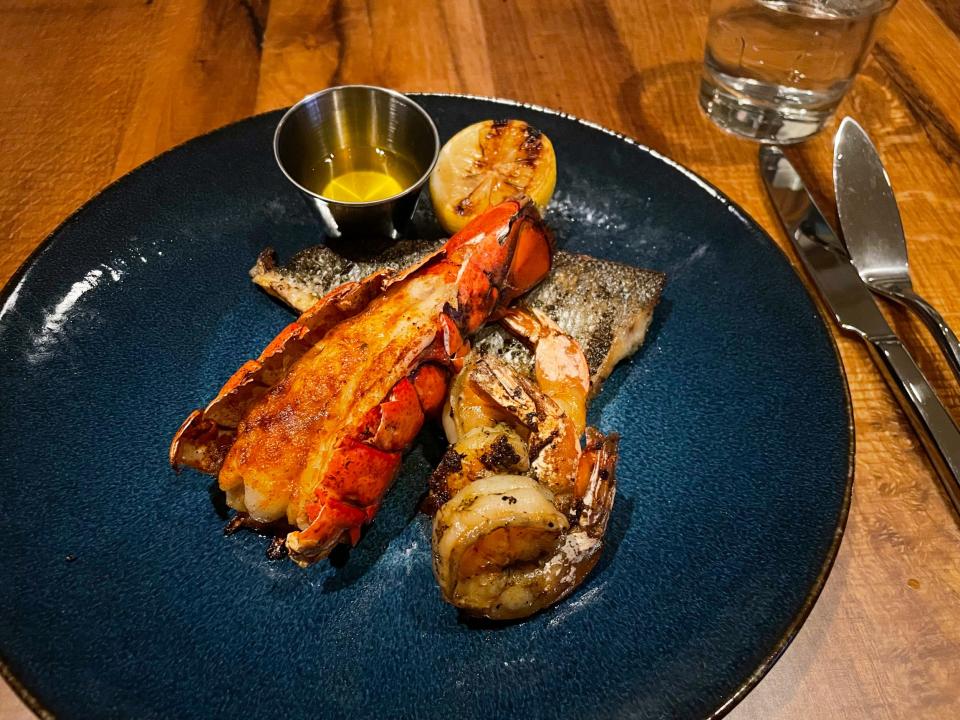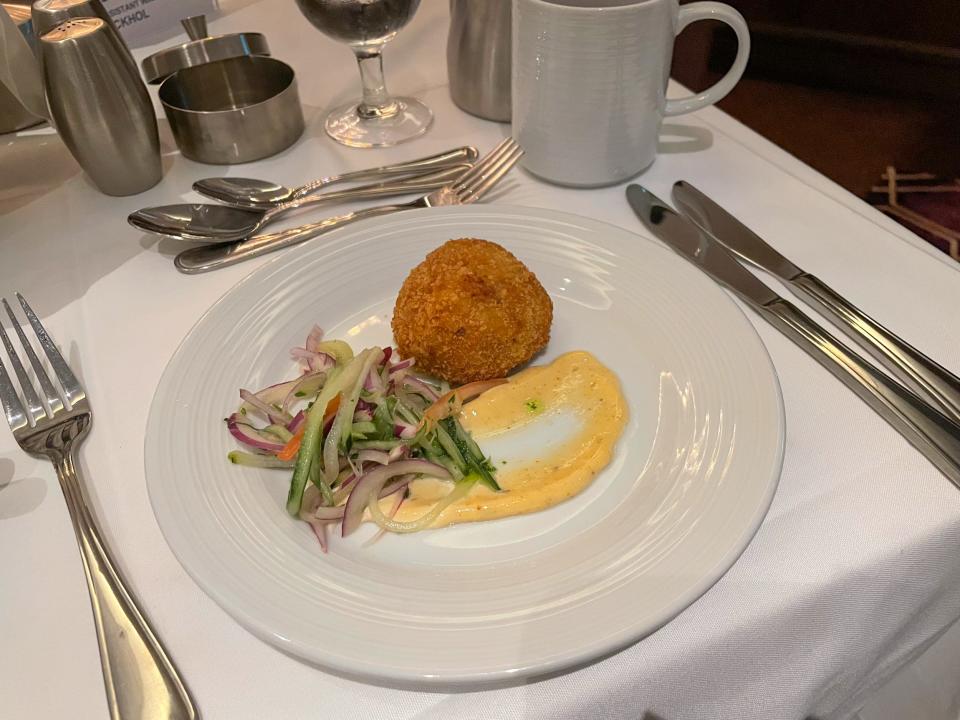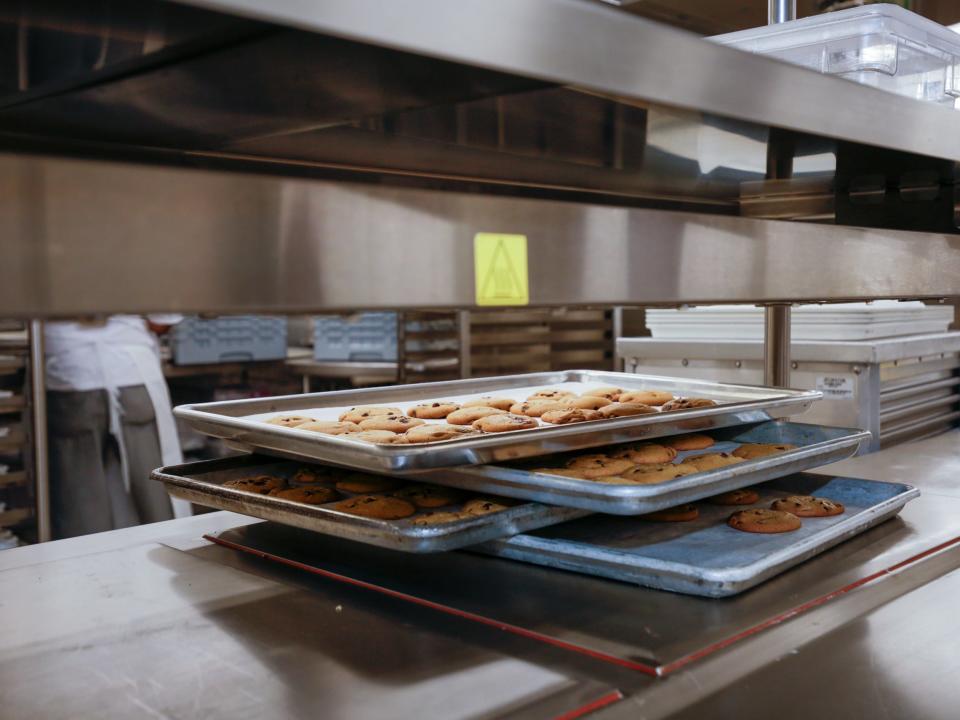See how the world's largest cruise ship feeds 10,000 people every day
Royal Caribbean's Icon of the Seas ship accommodates 9,950 people: 7,600 guests and 2,350 crew.
The cruise ship has over 40 restaurants, bars, and lounges.
Tour one of its 37 kitchens responsible for 2,400 dinners a day.
Most people don't go on airplanes just to get airplane food. Some travelers do, however, go on cruises just to get cruise food.
And for these hungry sailors, Royal Caribbean's new Icon of the Seas could be the closest thing to culinary heaven on earth (or at sea).
On the new world's largest cruise ship, dining is more than just a traditional buffet and poolside grill with burgers and pizza. It's that, of course, plus a feast of spaghetti Bolognese, raw oysters, and even rabbit — enough of it to feed up to 9,950 people (7,600 guests and 2,350 crew).
As you can probably guess, feeding everyone isn't cheap: Food is Royal Caribbean's second-highest expense after fuel, Linken D'Souza, the cruise line's senior vice president of food and beverage, told reporters in late January.
Icon's food preparation process begins on land in Miami, where the ship takes delivery of its provisions before every sailing.

Icon of the Seas currently operates seven-day cruises from Miami to Mexico, the Caribbean, and Royal Caribbean's private island, Perfect Day at CocoCay.
Fresh goods like berries, cheeses, and herbs are refreshed weekly, Germán Rijo, the executive chef, told said during a tour of the kitchen.

But frozen items — think prime rib, lobster, and fish — are received every two to three cruises.
A mega cruise ship means mega food orders.

Icon of the Seas stocks up on about 20,000 pounds of rice and 3,500 pieces of lobster for a typical weeklong cruise.
On a smaller sailing, let’s say one with 4,000 guests, the ship would still carry about 2,500 pieces of prime rib and 120 to 200 pieces of beef tenderloin.

Over the last few years, Royal Caribbean has been trying to source more of its ingredients domestically, where its ships are homeported, D'Souza said.
Icon of the Seas' restocked food supply is then distributed to its 37 kitchens.

The ship has more than 20 restaurants and cafés. Upcharged options include a grab-and-go sushi stand and a luxurious $200 per person dinner (the one that serves rabbit).
Travelers who don’t want to splurge on specialty dining could frequent the ship’s complimentary Main Dining Room.

The restaurant pumps out more rice, potatoes, lobster, beef tenderloin, and prime rib than any other dishes. But its menu rotates every night, giving repeat diners options like crab cakes, fried chicken, and escargot.
Just be sure to reserve your table in advance: The three-floor venue can feed 6,000 guests over 3 ½ hours.

To keep operations running smoothly, every floor of the restaurant has its own kitchen.
The one that services the bottom level is responsible for 2,400 people during a busy dinner service.
The first-floor kitchen isn’t your grandma’s 'heart of the home.'

The kitchen is a sterile and stainless steel land of giant pans, ovens, and mixers.
Unlike your decorative KitchenAid stand mixer at home, these tools aren't collecting dust.
Of Icon’s 425 cooks, 45 work in this kitchen, churning out 10 or 11-hour workdays.

Preparing food is an around-the-clock affair: Some work night shifts.
Besides servicing the Main Dining Room, the kitchen also prepares the ship’s breads and pastries.

It's no small feat for a ship of Icon of the Seas' size: Every day, the bakery churns out 35,000 to 40,000 baked goods, which include baguettes, muffins, and the most popular item: croissants, according to Alexander Perberschlager, a traveling executive corporate baker with the cruise line.
Nearby, soups and sauces (of large enough quantity to satisfy Bigfoot) simmer in 40 to 120-gallon pots.

Cooks also have typical tools like vegetable slicers, machines that portion meats, and pineapple peelers.
Like the ship’s buffet, guests in the Main Dining Room can order as much food as their hearts and stomachs desire.

To maintain portion sizes and decrease food waste, Royal Caribbean uses in-house historical data to determine what food and how much of it to cook, adjusted according to the demographic of its guests.
"If we have a lot of Latinos, we're going to need a lot of rice, beans, and chicharron," German Rijo, the executive chef, told reporters in late January.
Food waste could be a daunting problem on a ship that services the equivalent of a small town.

Some overproduced foods are stored in a blast chiller and reused later, mitigating waste.
Take rice, for example. Instead of tossing extra batches of the little carby morsels, the kitchen can blast chill and reuse it for fried rice or paella. Or, it can be reheated and served again as is.
According to the cruise line, non-reusable leftovers are put through a "waste-to-energy" system.

The tech, called Microwave-Assisted Pyrolysis (MAPs), can use organic waste to generate 200 to 300 kilowatts of energy — enough to run Icon of the Seas' waterpark, a spokesperson for Royal Caribbean told Business Insider.
But the best part about being on a cruise vacation (besides the unlimited food)? There’s no need to clean your dishes.

The kitchen's larger-than-life dishwashers will do it for you.
Read the original article on Business Insider


